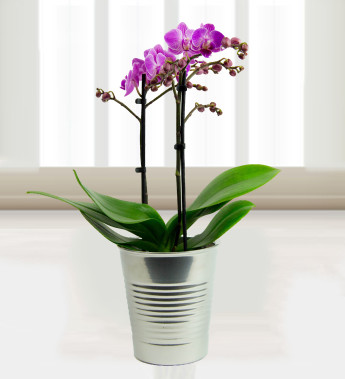
How to care for your potted orchids
If you want to send flowers that are sure to impress any lucky recipient, you can’t go wrong with orchids! These flowers are often seen as really delicate and some even believe that they are difficult to care for. Orchids are known for outlasting any other type of cut flowers and this makes it easy to see why these flowers last so long on the plant. Due to their beauty and long-lasting nature, it’s also understandable that these plants will fetch a somewhat higher price than many other house plants.
When buying any potted plant, it’s important to understand what that plant needs to flourish. Not all plants enjoy the same amount of water, sun, and humidity. Orchids are no exception and, if you send this particular plant as a gift, you might want to add some care tips to the gift so that the recipient knows how to get the most out of this stunning plant. It’s also important to understand that different types of orchids have different water and light preferences.
Orchids are tropical plants which is why so many people assume that they are difficult to grow in non-tropical climates. Another common misconception is that these plants need a lot of water. They actually only need to be watered every 5 to 12 days depending on the weather conditions. The amount of water you pour over the potting soil also depends on the weather and temperatures. The cooler the weather, the less frequently you will need to water your plant.
You may also be aware of the fact that the natural tropical home of orchids also tend to have high levels of humidity. Our homes are not normally this humid so, in order to create a sufficiently humid environment, you’ll need to use a humidity tray. You can make one yourself by arranging pebbles on a flat tray and then fill it with water. Place your potted plant on top of the humidity tray and top the tray up with water regularly. As the water evaporates, it will maintain satisfactory humidity levels around the plant. The other advantage of this method is that the potting soil will not remain permanently soaked. If you water too often or if you add too much water, you can cause the roots to rot and the plant will die.
With regards to fertilizer, it’s important that you strictly use formulas suited for orchids. You will find clear and easy to follow instructions on the fertilizer package and it’s important to always follow these instructions to the letter. If you add too much fertilizer, you can burn the roots. If you add too little, it won’t have much effect at all. All the more reason to follow those instructions perfectly!
You should also keep an eye on your plant and regularly inspect for pests. Some pests that love to devour orchids include snails, slugs, mealybugs, and aphids. With regards to repellents, you should choose one based on the pest threatening your orchid.
Most plants will tell you how they are doing through the health of their leaves. Orchids, on the other hand, indicate their health with their roots. You should always keep your orchid in the smallest possible pot. The tops of the roots should remain above the soil and you should monitor the roots regularly for any signs of damage or deterioration. When transplanting your orchid, only use a pot that’s one size up and allow your orchid to develop its root system gradually.
Remember, they love a lot of light but they prefer indirect sunlight since direct sun exposure can cause extensive damage to the leaves and flowers. With all of these essential tips, it’s that much easier to keep your orchids happy and make them last longer.
